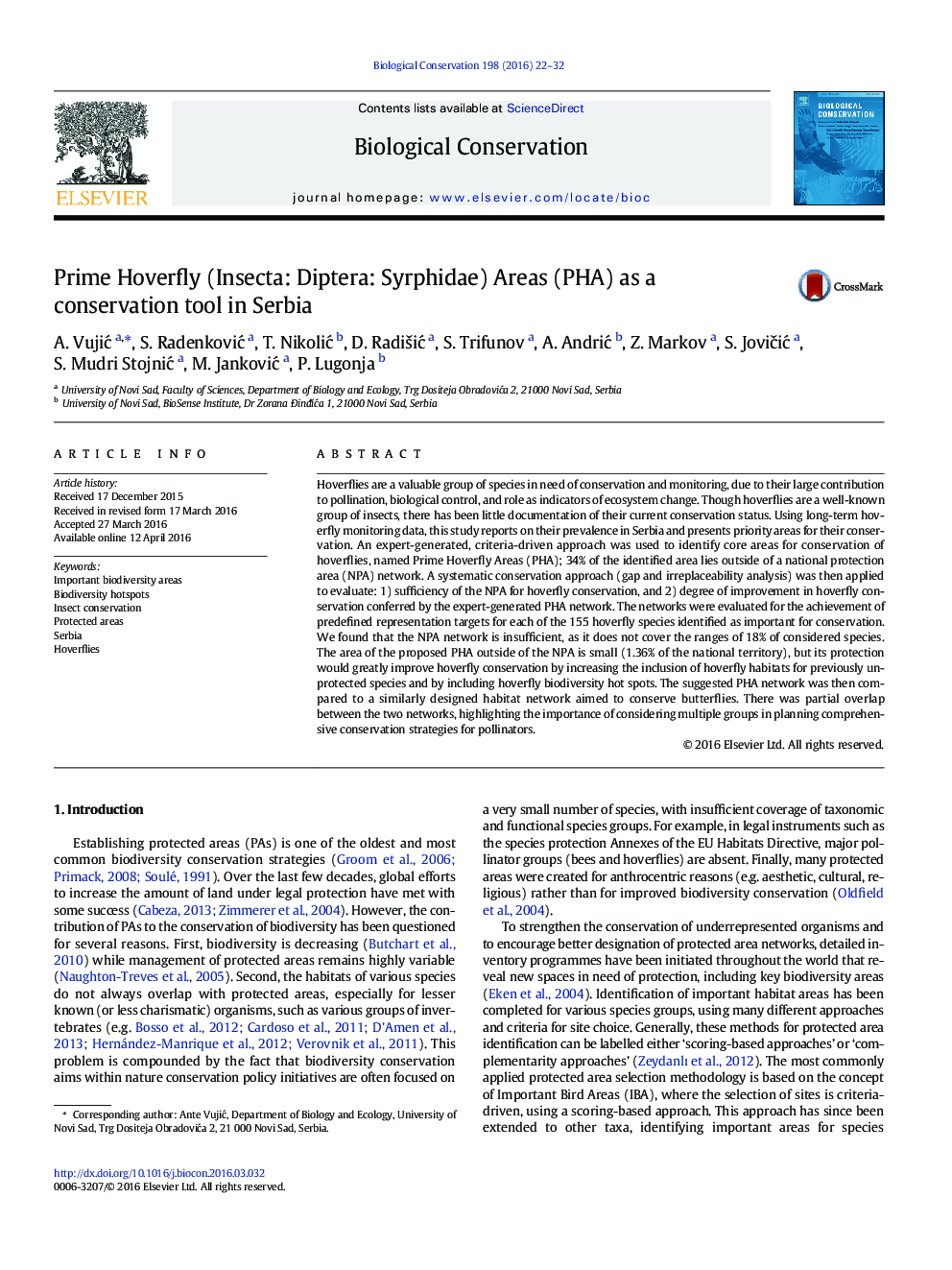| کد مقاله | کد نشریه | سال انتشار | مقاله انگلیسی | نسخه تمام متن |
|---|---|---|---|---|
| 4385014 | 1617903 | 2016 | 11 صفحه PDF | دانلود رایگان |
• Expert generated approach was used to define Prime Hoverfly Areas in conservation.
• The efficiency of the national protected areas in conserving hoverflies was checked.
• Gap and irreplaceability analysis were applied for evaluation of both areas.
• PHA increase: protected habitats surface, diversity hot-spots and number of species achieving conservation targets.
• National protected area enlargement by 1.36% through establishing PHA is suggested.
Hoverflies are a valuable group of species in need of conservation and monitoring, due to their large contribution to pollination, biological control, and role as indicators of ecosystem change. Though hoverflies are a well-known group of insects, there has been little documentation of their current conservation status. Using long-term hoverfly monitoring data, this study reports on their prevalence in Serbia and presents priority areas for their conservation. An expert-generated, criteria-driven approach was used to identify core areas for conservation of hoverflies, named Prime Hoverfly Areas (PHA); 34% of the identified area lies outside of a national protection area (NPA) network. A systematic conservation approach (gap and irreplaceability analysis) was then applied to evaluate: 1) sufficiency of the NPA for hoverfly conservation, and 2) degree of improvement in hoverfly conservation conferred by the expert-generated PHA network. The networks were evaluated for the achievement of predefined representation targets for each of the 155 hoverfly species identified as important for conservation. We found that the NPA network is insufficient, as it does not cover the ranges of 18% of considered species. The area of the proposed PHA outside of the NPA is small (1.36% of the national territory), but its protection would greatly improve hoverfly conservation by increasing the inclusion of hoverfly habitats for previously unprotected species and by including hoverfly biodiversity hot spots. The suggested PHA network was then compared to a similarly designed habitat network aimed to conserve butterflies. There was partial overlap between the two networks, highlighting the importance of considering multiple groups in planning comprehensive conservation strategies for pollinators.
Journal: Biological Conservation - Volume 198, June 2016, Pages 22–32
